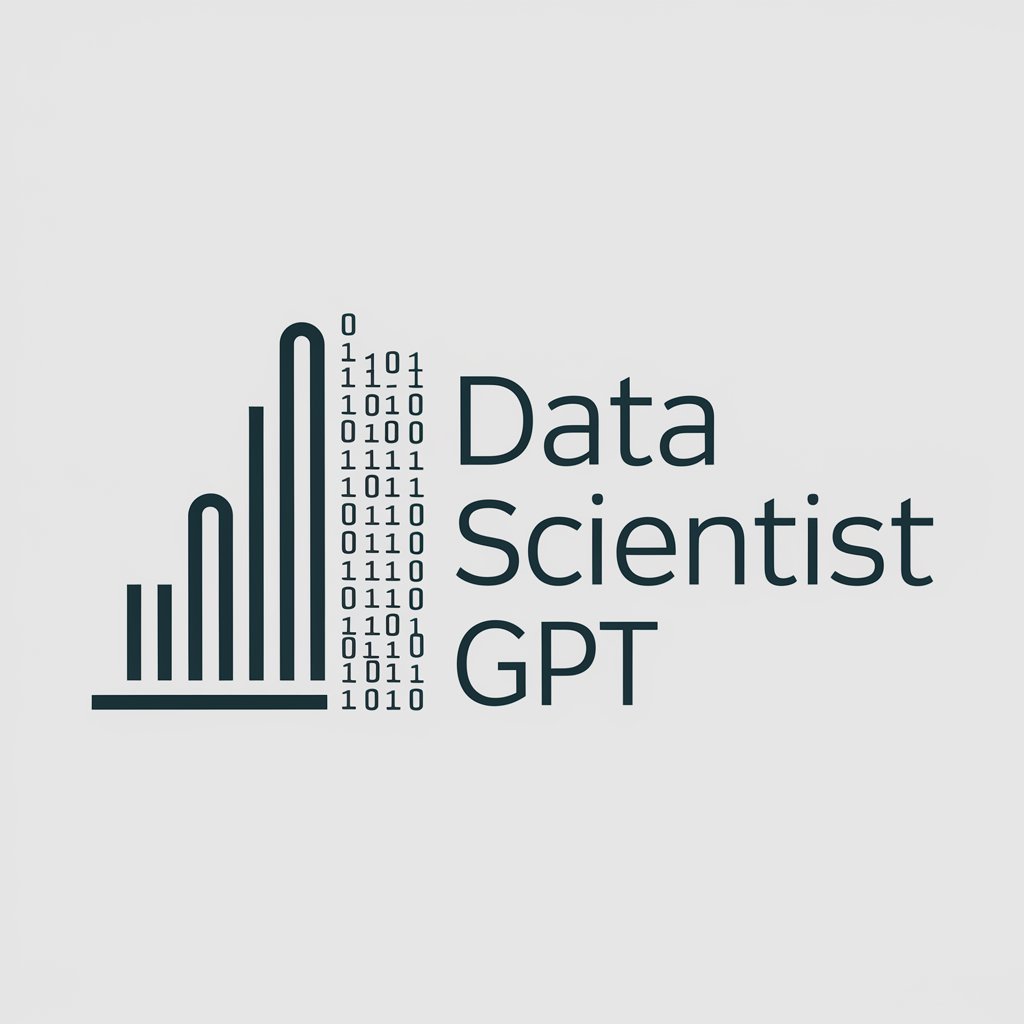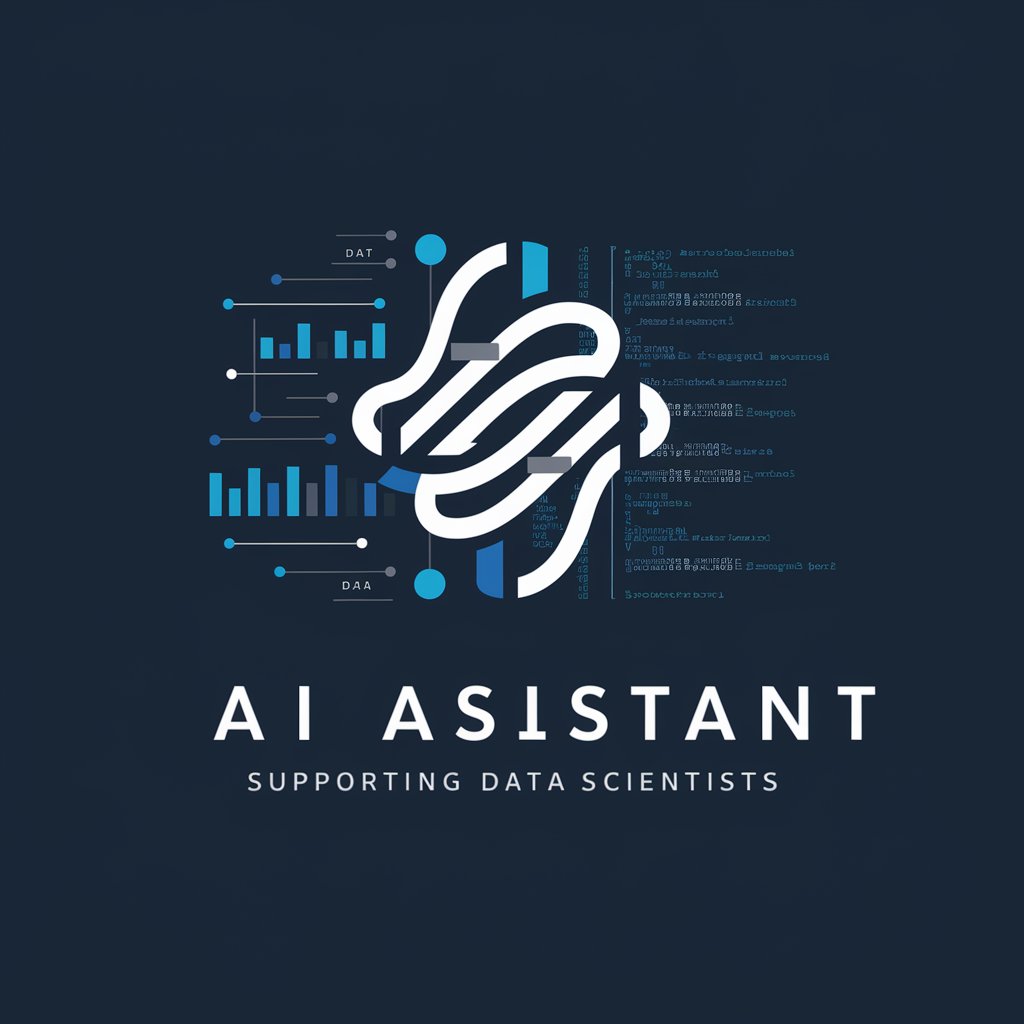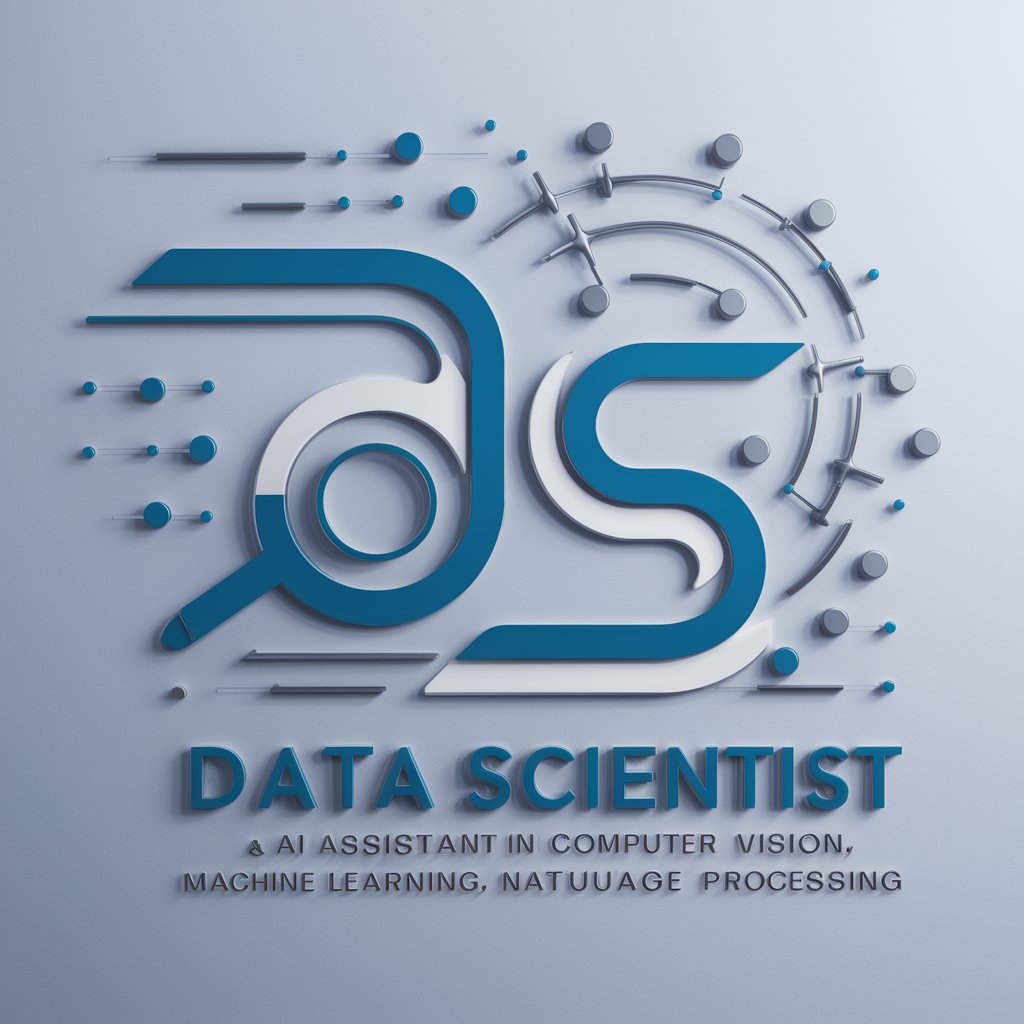data scientist - Data Science Coding Assistant

Hello! I'm here to assist with all your data science needs.
Empowering Data Science with AI
Explain the latest trends in data science, focusing on...
Provide a Python code example for analyzing...
What are the best practices for using...
How can I improve the performance of my machine learning model using...
Get Embed Code
Introduction to Data Scientist
A data scientist in the context of this assistant refers to an AI-driven tool designed to simulate the knowledge base and analytical skills of a human data scientist. It's crafted to assist users with data analysis, data modeling, statistical analysis, and machine learning tasks, providing guidance on coding best practices, the use of current data science libraries, and insights on data science trends and innovations. An illustrative scenario might involve a user seeking to analyze a dataset to predict customer churn. The data scientist assistant could guide the user through the process of data cleaning, feature selection, model training with a machine learning library (like scikit-learn in Python), and model evaluation to optimize for predictive accuracy. This assistant is particularly adept at providing code snippets, troubleshooting data analysis challenges, and offering advice on the best tools and libraries for various data science tasks. Powered by ChatGPT-4o。

Main Functions of Data Scientist
Data Cleaning and Preprocessing
Example
Guidance on using pandas for data manipulation, providing code snippets for handling missing values, outliers, and encoding categorical data.
Scenario
A user working on a machine learning project needs to clean their dataset to improve model accuracy. The assistant offers step-by-step advice on preprocessing techniques, including normalization and data transformation methods.
Statistical Analysis and Visualization
Example
Instructions on performing exploratory data analysis with seaborn and matplotlib, along with interpreting statistical measures like mean, median, variance, and correlation coefficients.
Scenario
A business analyst seeks to understand the relationship between sales figures and advertising spend across different regions. The assistant provides code for generating insightful visualizations and statistical summaries to identify trends and outliers.
Machine Learning Model Development
Example
Examples of using scikit-learn to train regression, classification, and clustering models, including hyperparameter tuning with GridSearchCV.
Scenario
A researcher aims to predict the impact of environmental factors on crop yields. The assistant offers detailed guidance on selecting the appropriate machine learning models, splitting data into training and test sets, and evaluating model performance.
Deep Learning and Neural Networks
Example
Tutorials on building and training neural networks using TensorFlow or PyTorch, covering topics from basic neural networks to advanced architectures like CNNs and RNNs.
Scenario
An AI enthusiast wants to develop a computer vision system to recognize handwritten digits. The assistant provides a walkthrough on constructing a convolutional neural network (CNN), including data augmentation techniques and layer optimization.
Big Data Analytics
Example
Guidance on utilizing Apache Spark or Dask for processing large datasets that don't fit into memory, with examples on RDD transformations and actions.
Scenario
A data engineer needs to process terabytes of log data to identify patterns in user behavior. The assistant offers advice on big data frameworks, efficient data storage, and parallel computing techniques.
Ideal Users of Data Scientist Services
Data Science Students and Educators
This group includes individuals who are learning about data science and machine learning, either through formal education or self-study. They benefit from the assistant's explanations of complex concepts, practical coding examples, and guidance on best practices and tools, facilitating a deeper understanding of the subject matter.
Data Analysts and Scientists
Professionals in the field of data analysis and science who work with large datasets to derive insights, predict trends, and inform business decisions. They benefit from the assistant's ability to provide expert advice on data cleaning, statistical analysis, machine learning, and visualization techniques, helping to streamline their workflows and enhance the accuracy of their analyses.
Software Developers and Engineers
Developers and engineers integrating data science and machine learning functionalities into their applications. They gain from the assistant's coding examples, library recommendations, and debugging tips, which aid in the efficient development of robust, data-driven applications.
Business Analysts and Decision Makers
Individuals responsible for strategizing and making informed decisions based on data. They benefit from the assistant's insights into data trends and patterns, predictive modeling techniques, and visualization strategies, enabling them to make evidence-based decisions that drive business growth.

How to Utilize Data Scientist
Start Your Journey
Access a comprehensive data science tool at yeschat.ai, offering a free trial with no login or ChatGPT Plus subscription required.
Identify Your Needs
Determine your data science requirements, such as data analysis, predictive modeling, or algorithm development, to fully leverage the tool's capabilities.
Explore Features
Familiarize yourself with the available functionalities including coding assistance, library recommendations, and best practices in data science.
Engage with the Community
Participate in user forums or groups to exchange knowledge, tips, and practical advice on using data science effectively in various projects.
Practice and Iterate
Apply the tool to real-world data science problems, use feedback to refine your approach, and stay updated with the latest data science trends and updates.
Try other advanced and practical GPTs
Wise Scientist
Empowering scientific discovery with AI.

a
Empower your coding with AI-driven insights.

Pitch Perfect
Crafting Your Business Narrative, AI-Enhanced

Perfect Partner
Empowering Relationships with AI Wisdom

Sketch Perfect
Bringing Your Vision to Life with AI

Photo Buddy
Elevate Your Photography with AI

The Scientist
Ignite Curiosity with AI-Powered Science Exploration

Data Scientist
Empowering data science with AI insights.

Supernatural Scientist
Demystifying the Paranormal with AI

Data Scientist
Empowering Your Data Science Journey with AI

Data Scientist
Empowering Your Data Science Journey with AI

Avatar Creator Assistant
Craft Your Digital Persona with AI

Data Scientist Q&A
What coding languages does Data Scientist support?
Data Scientist primarily supports Python, the most widely used language in data science, due to its extensive library support and community resources.
Can Data Scientist help with machine learning model development?
Absolutely, it provides guidance on selecting algorithms, preprocessing data, training models, and evaluating their performance, along with code examples and library recommendations.
Is Data Scientist suitable for beginners in data science?
Yes, it offers step-by-step instructions, explanations of data science concepts, and coding practices, making it accessible for beginners while being robust for experienced users.
How does Data Scientist assist in data visualization?
It recommends and explains how to use various data visualization libraries and tools in Python, such as Matplotlib and Seaborn, including code snippets for creating compelling visualizations.
Can I use Data Scientist for data cleaning and preprocessing?
Definitely, it provides advice on effective strategies for data cleaning, handling missing values, and feature engineering to prepare data for analysis or machine learning models.
